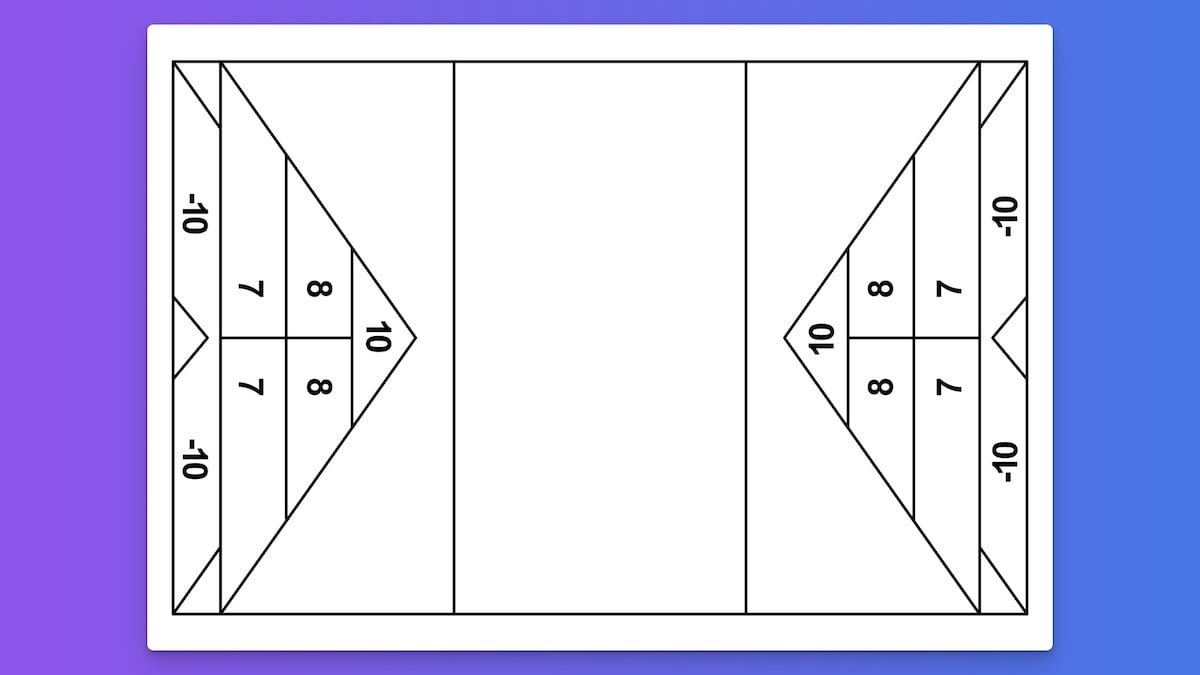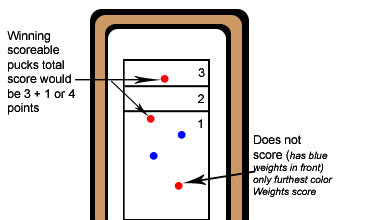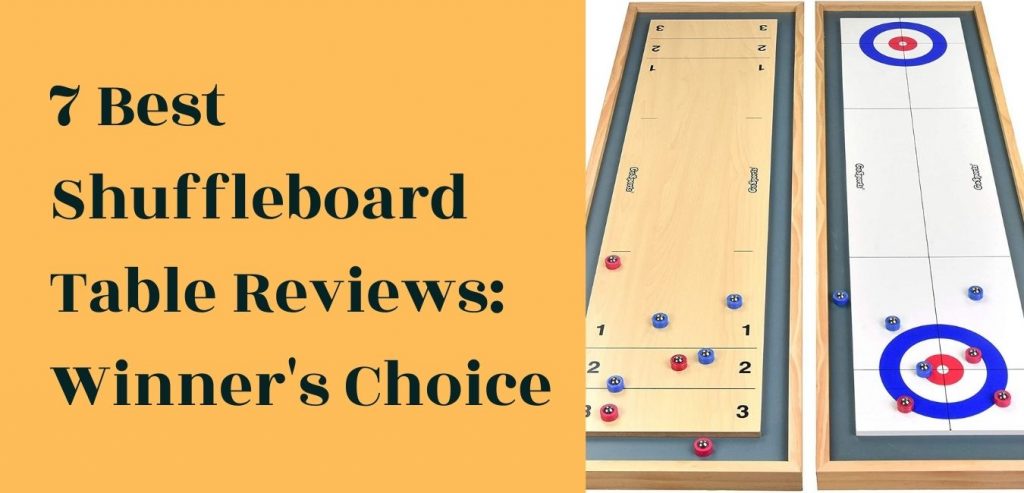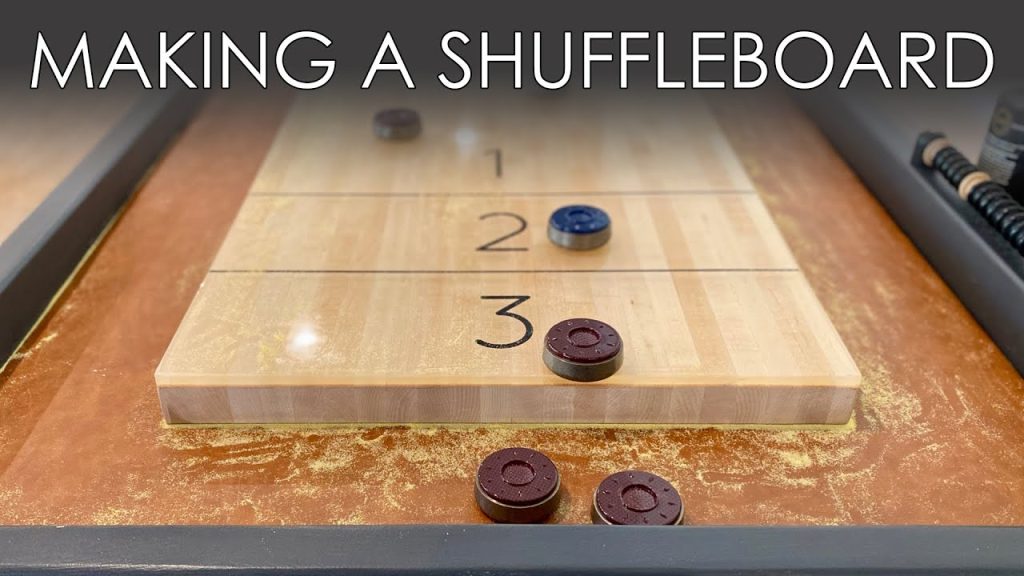To win a shuffleboard game, you need to score a specific number of points. The exact points can depend on the type of shuffleboard game you are playing.
Generally, games are played to 15 or 21 points. Shuffleboard is a fun and engaging game enjoyed by many. Understanding how many points are needed to win is crucial for players. This rule can vary, but most often, a game is won by reaching 15 or 21 points.
Knowing the point requirement helps players strategize better and enjoy the game more fully. Whether you are a beginner or a seasoned player, having a clear goal in mind keeps the competition lively and exciting. Let’s dive deeper into the specifics of scoring in shuffleboard to enhance your playing experience.
Introduction To Shuffleboard
Shuffleboard is a fun and exciting game enjoyed by many. Whether played on a deck or a table, it offers entertainment for all ages. Understanding the rules and points needed to win adds to the enjoyment. Let’s dive into the basics of shuffleboard.
What Is Shuffleboard?
Shuffleboard is a game where players slide weighted pucks down a narrow, smooth surface. The goal is to land the pucks in specific scoring areas. The surface can be a long outdoor court or a shorter indoor table. Players use long sticks called cues to push the pucks.
Brief History
The origins of shuffleboard trace back to the 15th century. It started in England and quickly gained popularity. By the 19th century, it made its way to the United States. Initially, it was a popular pastime on cruise ships. Over time, it spread to bars, parks, and community centers.
Today, shuffleboard is a beloved game with various forms and rules. It has a rich history and continues to bring joy to many. Understanding its past adds depth to playing and appreciating the game.
Basic Rules
Understanding the basic rules of shuffleboard is crucial for any player. This section will guide you through the fundamental aspects to get you started. Knowing the objective and player positions will help you enjoy the game better.
Objective Of The Game
The main goal in shuffleboard is to score points by sliding pucks. Players aim to land their pucks in the highest-scoring areas. The game can be played one-on-one or in teams. The first player or team to reach the winning score wins the game.
Player Positions
Players stand at opposite ends of the shuffleboard table. Each player takes turns sliding their pucks. In singles, both players stand at one end and slide towards the other. In doubles, partners stand at opposite ends. Each player gets four pucks, usually distinguished by color.
Scoring System
Understanding the scoring system in shuffleboard is essential for any player. Scoring in shuffleboard can vary, but the basic principles remain consistent. This section will guide you through the primary scoring methods and common variations.
How To Score Points
Points are scored based on where the puck lands on the board. The shuffleboard table has sections marked with numbers. These numbers represent the points you earn. The closer the puck is to the end, the higher the points. If the puck lands in the highest scoring zone, you get the most points. If the puck hangs over the edge without falling, it scores the highest points.
Common Scoring Variations
Different places may use different scoring rules. The most common is the “21” system. In this system, the first player to reach 21 points wins. Another popular variation is the “15” system, where the goal is to score 15 points. Some games use a “frame” system, scoring over a set number of frames, like in bowling. Each variation adds a unique twist to the game, making every match exciting.
Winning The Game
Winning in shuffleboard is a thrilling experience. The objective is clear. Score points by sliding pucks into the scoring zones. But how many points do you need to win? The answer depends on the game type. Let’s dive into the specifics.
Standard Points Needed
In most casual games, players aim for 15 points. This is the standard target. Players take turns sliding their pucks. Points are awarded based on the puck’s final position. If a puck lands in the highest zone, it scores the most points. Simple, right?
Sometimes, players agree on different point goals. For example, some may play to 21 points. The rules remain the same. Only the target score changes. This flexibility makes the game exciting and adaptable.
Tournament Rules
Tournament play often follows stricter rules. These games typically aim for 21 points. The rules ensure fair competition. Each tournament may have slight variations. But the 21-point target is common.
In tournaments, players must follow specific guidelines. Fouls and penalties might apply. This adds a level of challenge. It ensures that only the best players advance. Understanding these rules is crucial for anyone aspiring to compete.
Whether playing casually or in a tournament, knowing the points needed to win is key. It helps you strategize and play effectively. Happy shuffling!
Shuffleboard Strategies
Winning at shuffleboard requires more than just skill. You need a solid strategy. Both offensive and defensive techniques are crucial. Each move can make or break your game. Let’s dive into some effective strategies that can help you win.
Offensive Techniques
Offensive play focuses on scoring points. Here are some key techniques:
- Targeting the Scoring Zones: Aim for the highest scoring zones. These are typically at the far end of the board.
- Speed Control: Adjust the force of your shot. This helps your puck land exactly where you want it.
- Angle Shots: Use the edges of the board. This can help avoid your opponent’s blocks.
- Follow-through: A smooth follow-through ensures accuracy. It also helps in maintaining consistent speed.
Defensive Techniques
Defense is about preventing your opponent from scoring. Below are some effective defensive strategies:
- Blocking: Place your puck in front of your opponent’s. This blocks their path to the scoring zones.
- Clearing the Board: Use strong shots to knock off your opponent’s pucks. This minimizes their scoring opportunities.
- Protecting Your Pucks: Place your pucks behind others. This makes it harder for opponents to knock them off.
- Positioning: Always be mindful of puck placement. Control the center of the board to limit your opponent’s options.
Mastering these shuffleboard strategies can give you the edge. Whether you focus on offense or defense, each technique plays a crucial role. Practice these strategies to improve your game and increase your chances of winning.

Credit: shuffleboardcity.com
Popular Shuffleboard Variants
Shuffleboard is a fun and competitive game enjoyed by many. There are different ways to play, each with its own rules. Understanding the popular shuffleboard variants can enhance your experience. Let’s dive into the details.
Table Shuffleboard
Table shuffleboard is played on a long, smooth table. The goal is to slide pucks into scoring zones. Each zone has different points. The first player to reach a set number of points wins. This number is usually 15 or 21 points in casual games. In tournaments, it can go up to 51 points.
Here are some key points for table shuffleboard:
- Use four pucks per player.
- Alternate turns with your opponent.
- Avoid knocking your puck off the table.
- Scoring zones range from 1 to 4 points.
Deck Shuffleboard
Deck shuffleboard is often played on cruise ships or outdoor courts. Players use long cues to push disks into a scoring area. The scoring zones are marked on the deck.
Here are some key points for deck shuffleboard:
- Use two disks per player.
- The court is 52 feet long.
- Scoring zones range from 7 to 10 points.
- First player to reach 75 points wins.
Deck shuffleboard has some unique rules. For instance, a disk that touches the line doesn’t score any points. This adds a layer of strategy to the game.
Equipment And Setup
Understanding the equipment and setup for shuffleboard is essential for a great game. This guide will walk you through the necessary gear and how to set up the court.
Required Equipment
To play shuffleboard, you need specific equipment:
- Shuffleboard Table or Court: A smooth, flat surface for play.
- Pucks: Also called weights, used to slide across the table.
- Shuffleboard Cues: Long sticks to push the pucks on a floor court.
- Scoreboard: Keeps track of the points scored.
- Shuffleboard Powder: Reduces friction for smoother puck movement.
Setting Up The Court
Setting up the shuffleboard court is simple. Follow these steps:
- Choose a Flat Surface: Ensure the table or court is level.
- Apply Shuffleboard Powder: Sprinkle powder evenly across the surface.
- Position the Pucks: Place them at the starting area.
- Set Up the Scoreboard: Place it where all players can see.
For a floor shuffleboard court, use the following dimensions:
| Feature | Dimensions |
|---|---|
| Length | 39 to 52 feet |
| Width | 6 feet |
| Target Area | 6 feet by 6 feet |
Always ensure the playing surface is clean. This helps the pucks slide smoothly.

Credit: keepthescore.com
Shuffleboard Etiquette
Understanding shuffleboard etiquette is essential for enjoying the game. Good manners and respect for others make the game more enjoyable for everyone. Let’s explore some key points of etiquette in shuffleboard.
Sportsmanship Tips
Good sportsmanship is crucial in shuffleboard. Here are some tips:
- Always congratulate your opponent, whether you win or lose.
- Do not celebrate excessively after scoring a point.
- Keep your temper in check. No yelling or throwing cues.
- Respect the rules and play fairly. Cheating is never acceptable.
Common Courtesies
Following common courtesies makes the game pleasant for all players:
- Wait for your turn patiently. Do not rush other players.
- Keep the playing area clean. Pick up any trash or debris.
- Do not interrupt others while they are taking their shot.
- Be mindful of your surroundings. Avoid blocking the view of others.
- Offer to help set up or put away equipment after the game.
These simple actions show respect and consideration for other players.
Tips For Beginners
Shuffleboard is an exciting game enjoyed by many. For beginners, understanding the game’s basics and improving skills can make it more fun. This guide offers useful tips for those new to shuffleboard.
Learning The Basics
Start by learning the rules. Know the scoring system and game setup. Familiarize yourself with the court and equipment. Practice sliding the puck smoothly. Control your strength and direction.
Improving Your Skills
Focus on your stance and grip. A steady stance helps with accuracy. Hold the puck lightly, not too tight. Watch experienced players and learn from them. Practice regularly to improve your aim. Aim for specific targets during practice.
Play with others at your skill level. Friendly games help build confidence. Stay calm and patient. Improvement takes time. Enjoy the game and have fun.

Credit: www.wikihow.com
Frequently Asked Questions
How Many Points To Win Shuffleboard?
In standard shuffleboard, a game is won by the first player to reach 15 points. Tournament games may vary.
What Is The Goal Of Shuffleboard?
The goal is to slide pucks into scoring zones. Players aim to outscore their opponents by reaching target points.
Are There Different Scoring Rules?
Yes, house rules can vary. Standard rules use scoring zones from 1 to 4 points.
How Do You Score In Shuffleboard?
Pucks must land in designated scoring zones. Only pucks fully in a zone count for points.
Conclusion
To win at shuffleboard, aim for 15 or 21 points. The target score can vary based on the game rules. Knowing these rules helps you enjoy the game more. Practice often to improve your skills. Remember, shuffleboard is fun and social.
Play with friends and family. Enjoy every moment on the shuffleboard court. Happy playing!



